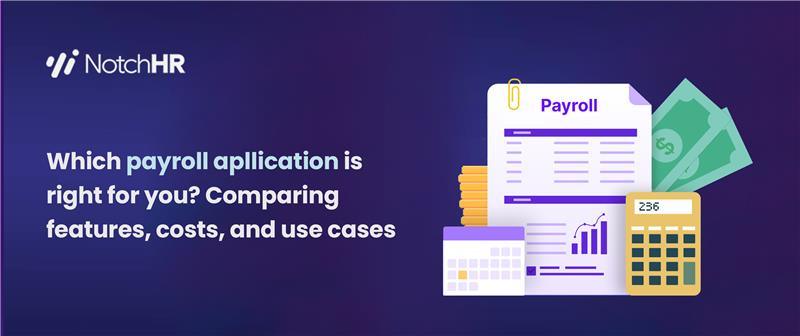Effective performance management system is the cornerstone of any thriving organisation. Implementing effective performance management strategies boosts productivity and creates continuous improvement and engagement. 98% of organisations believe performance management system is crucial for business success.
Whether you’re managing a small team or an entire organisation, knowing how to evaluate and improve employee performance can make or break your company’s success. This process is not about micromanaging but about supporting employees in ways that inspire growth and continuous improvement. When performance management is done right, it leads to a more engaged workforce, higher productivity, and ultimately, a stronger bottom line.
In this blog, we’ll explore five key performance management system that can help your organisation. These performance management strategies include setting clear goals, providing regular feedback, investing in employee development, conducting meaningful reviews, and recognising your team.
Strategy 1: Set Clear and Achievable Goals
Setting clear and achievable goals is the foundation of effective performance management system. When your team knows exactly what is expected of them, they can focus their efforts and work more efficiently. Here’s how you can make goal-setting work for your organization:
- Be Specific: Define goals clearly. Instead of “Improve sales,” say “Increase sales by 15% next quarter.”
- Make Goals Measurable: Use metrics like “Reduce customer complaints by 20% in six months.” Measurable goals help you track progress and make adjustments as needed.
- Ensure Goals are Achievable: Set realistic but challenging targets. Ambitious yet attainable goals inspire your team to perform better, while unrealistic goals can demotivate them.
- Align with Company Objectives: Goals should contribute to the overall mission. Ensure that individual goals support the company’s strategic direction.
- Set Deadlines: Time-bound goals keep the team focused. Without deadlines, goals can become open-ended, and progress may stagnate.

Real-Life Example: Dangote Group
When Aliko Dangote set out to expand his cement business, his goal was specific and measurable: to become Africa’s largest cement producer within a set time. Breaking down this vision into smaller targets kept the company on track, achieving its objectives by 2015. Each year, Dangote Cement increased its production capacity by measurable amounts, ensuring they were moving towards the ultimate goal.
Strategy 2: Regular Feedback and Communication
Regular feedback is crucial for improving performance. Employees need timely and constructive feedback to adjust their efforts and align with the organization’s objectives. When feedback is delayed or vague, employees may lose motivation or become uncertain about their performance. Building a culture of feedback helps your team improve continuously.
Here’s how to foster a culture of feedback:
- Be Timely: Give feedback soon after the event. This makes it more relevant and actionable.
- Be Specific: Replace generic feedback like “Good job” with detailed comments such as “Your presentation was clear and engaging, especially the way you explained the data.”
- Balance Positive and Constructive Feedback: While it’s important to highlight areas for improvement, acknowledging achievements can boost morale. A balanced approach encourages growth without damaging confidence.
- Encourage Two-Way Communication: Feedback should be a dialogue, not a monologue. Create an environment where employees feel comfortable sharing their thoughts. This can lead to valuable insights.
- Use Feedback Tools: Implement tools like NotchHR to streamline feedback. Feedback platforms make it easy for managers to deliver consistent, timely feedback and track performance over time.
Regular feedback ensures employees stay aligned with goals and continuously improve their performance, creating a more dynamic and engaged team.
Strategy 3: Employee Development and Training
One of the performance management strategies that should not be avoided is Investing in employee development. When employees feel supported in their professional growth, they are more likely to stay loyal and motivated. Employee development should go beyond mandatory training sessions—it should be an ongoing process that evolves with the needs of both the organization and its employees.
Here’s how to do it effectively:
- Identify Skill Gaps: Conduct regular assessments to understand where your team needs improvement. This helps in tailoring training programs to meet specific needs.
- Offer Diverse Training Programs: Provide a mix of on-the-job training, workshops, online courses, and mentoring. This variety ensures that all learning styles are catered to. NotchHR has different learning and development options your company can leverage to get ahead of the crowd.
- Encourage Continuous Learning: Create a culture where learning is ongoing. Encourage your employees to take up new courses and attend industry conferences.
- Provide Career Development Opportunities: Create a culture where learning never stops. Encourage your employees to take on new courses, attend industry conferences, or explore new skills relevant to their roles.
- Leverage Technology: Utilize e-learning platforms, webinars, and virtual training sessions. This flexibility makes learning accessible to all employees, regardless of their location.
When you prioritise employee development, you create a more skilled, motivated, and loyal workforce.
Strategy 4: Performance Reviews and Appraisals
Performance reviews can sometimes be dreaded, but they don’t have to be. When done right, they are valuable opportunities for growth, goal alignment, and recognition of achievements. Regular performance reviews help both the employee and the organisation by providing structured feedback and a clear path forward.
Here’s how to make them more effective:
- Prepare Thoroughly: Gather data, including feedback from peers and past performance reviews, to ensure you have a comprehensive understanding of the employee’s progress.
- Be Objective: Focus on specific behaviors and outcomes. Avoid making evaluations based on personal traits, which can lead to bias.
- Set Clear Expectations: Use the review to set goals for the future, ensuring the employee knows what is expected of them moving forward.
- Encourage Self-Assessment: Allow employees to evaluate themselves. This promotes accountability and gives insight into how they view their own performance.
- Follow-up: Schedule regular follow-up meetings to track progress and provide ongoing support.
Real-Life Example: MTN Nigeria
MTN conducts bi-annual performance reviews, including self-assessments and peer evaluations. This process has helped build a culture of transparency and continuous improvement within the organisation, driving employee engagement and performance.

Strategy 5: Recognition and Rewards
As one of the key performance management system Strategies, recognition and rewards are powerful motivators. Employees who feel appreciated are likelier to stay engaged and committed to their work. It’s important to make recognition timely, specific, and personalised to have the most impact.
Here’s how to implement effective recognition:
- Be Specific and Timely: Recognize achievements as they happen. Specific praise such as “Great job on closing that deal with XYZ Company” is far more effective than a generic “Good job.”
- Use Varied Rewards: Combine monetary rewards (bonuses, raises) with non-monetary rewards (public recognition, extra time off). This ensures that all employees feel valued in a way that resonates with them.
- Create a Recognition Program: Implement a formal program that allows peers and managers to nominate employees for outstanding work. This encourages a culture of appreciation.
- Celebrate Milestones: Recognize work anniversaries, project completions, and personal achievements. This shows employees that you care about their journey, not just their output.
- Personalize Rewards: Tailor rewards to individual preferences. Some may prefer a gift card, while others value a handwritten note or public recognition.
Example: GTBank’s Employee of the Month Program
GTBank’s Employee of the Month program celebrates outstanding employees, boosting morale with public recognition and bonuses. This initiative has significantly improved employee engagement and satisfaction.
Conclusion
Improving performance management system requires a strategic and intentional approach. When you set clear goals, provide regular feedback, invest in employee development, conduct meaningful reviews, and recognize achievements, you build a motivated, high-performing team. Implementing these Performance Management System Strategies will help your organisation thrive, ensuring both short-term success and long-term growth.
To streamline and enhance your performance management system efforts, consider using NotchHR’s Performance Management. This comprehensive software offers tools to support goal setting, feedback, employee development, reviews, and recognition. Start using NotchHR today and see the transformative impact on your team’s performance and overall organisational growth.



